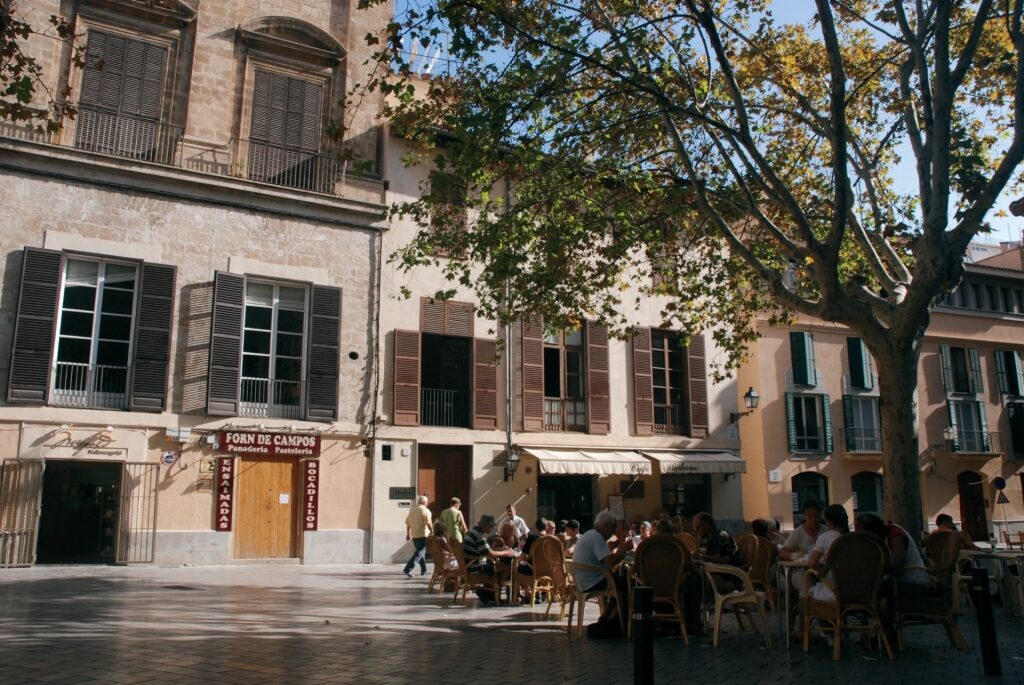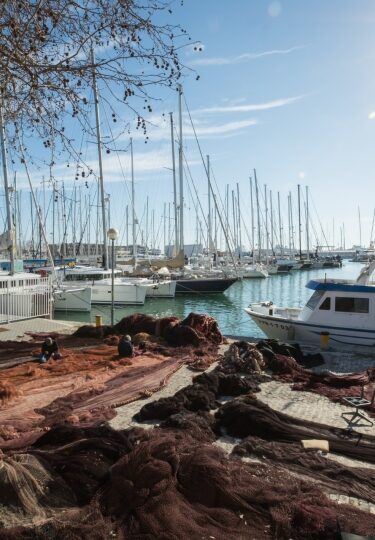The best time to visit Mallorca for glorious Mediterranean sunshine is the summer months, from June to September. But the largest of the Balearic islands is in fact a year-round destination, with compelling reasons to visit during any season.
Mallorca, which lies in the Mediterranean Sea, some 125 miles east of the Spanish mainland, enjoys a typical Mediterranean climate. This means it has mild winters and hot summers, which can be humid at times, although the humidity is tempered by sea breezes.
The island is defined by a spine of craggy mountains, the Serra de Tramuntana, along its western flank, where temperatures are slightly lower at altitude, and a central plain that gets extremely hot in summer. The coast is scalloped with rocky coves and broad, sandy bays, with generally calm seas, which explains its popularity for summer vacations.
Visiting Mallorca By Season
Summer

Palma de Mallorca
June, July, and August in Mallorca are hot and sunny. Temperatures rise to 78.1°F (25.6°C) on average in August, the hottest month, with daily highs of 89°F (31.6°C). The humidity can be high, broken by occasional dramatic thunderstorms. But essentially, there’s very little rain beyond this. July is the driest month, with just 0.3 inches (7mm) of rain and a delightful 11 hours of sunshine daily. This is the best time to go to Mallorca for a beach vacation.
July and August are wonderful months for watersports and swimming in the sea, with temperatures a balmy 79°F (26°C).
Fall
September, October, and November are all good months to visit Mallorca. September still feels like summer, with a daily average of 72.4°F (22.4°C), dropping to 57.2°F (14°C) by November. But this is the daily average; November can still see highs of 62°F (16.5°C).
Rainfall increases during the fall, although it’s still not significant. October is statistically the wettest month of the year, but even this only means an average of 2.8 inches (70mm). The days are getting shorter as the year progresses, but even so, November receives 5.5 hours of sunshine daily.
Winter
Winters in Mallorca are mild. There are plenty of sunny days, although the island may also experience periods of rain and wind. The Tramuntana mountains may be capped with snow, although snow at sea level is extremely rare. January is the coolest month, with daily averages of 49.9°F (9.9°C). Rainfall is consistent, with around 1.2 inches (30mm) a month in January and February.
Although winter is the lower season for visitor arrivals, February is nonetheless a popular time for cycling and hiking. You’ll see dozens of cyclists tackling the mountain roads and speeding across the plains, which are bursting with delicate almond blossom. Citrus groves all over the island are heavy with fruit, too.
Spring
The mercury climbs between March and May. March is another popular month for cycling and hiking. But essentially, as the Mediterranean’s tourist season is getting longer, May is now the beginning of the island’s busy period, especially in Palma, which is a popular weekend break destination for Europeans.

Palma de Mallorca
By mid-May, the average daily temperature is 64.5°F (18°C). Restaurants are offering outdoor dining, and Mallorca’s beaches are basking in the sunshine, although the sea is still a cool 63°F (17°C).
When Is Rainy Season?
The rainiest month in Mallorca is October. The rainy season, such as it is, lasts from late September to December, but rainfall is still very low and is not a reason to avoid traveling to the island. October, for example, still receives 6.5 hours of sunshine daily.
When Is High Season?
Mallorca enjoys different high seasons for different vacation styles. Summer is high season for beach vacations. February is the perfect time to come for swathes of pinky-white almond blossoms covering the central plains. May and September are perfect for sightseeing.
As Palma is a popular city break destination in its own right, it enjoys a long season, from April to November.
When Is Shoulder Season?

La Seu, Palma de Mallorca
Shoulder season in Mallorca is the spring months of April and early May, and fall, from October to November. These months are outside the main beach vacation season, but the island is still busy with visitors who come for the scenery, the culture, and Palma’s impressive food scene.
Easter is an exception; it’s a big holiday in Spain, with a week of somber processions, parades, and church services between Palm Sunday and Easter Sunday. Special pastries are prepared by the island’s bakeries and families come together for the occasion. This can be a wonderful time to visit and experience authentic Mallorcan culture.
When Is Low Season?
Low season in Mallorca is from late November to February, the Christmas and New Year period excepted. The weather is cooler and wetter and some hotels and seasonal businesses may close. Even though frost and snow are rare in Palma, this is the season for sugary churros dipped in thick hot chocolate.
Read: Best Things to Do in Mallorca

Palma de Mallorca
Do you want to discover this beautiful island for yourself? Browse Celebrity’s cruises to Mallorca and plan your Mediterranean adventure.


